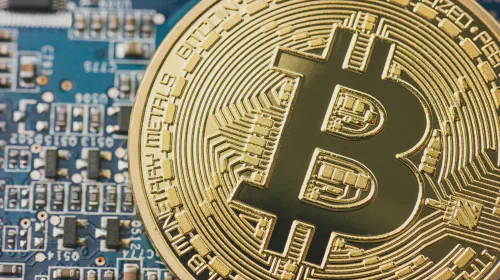Why are Ethereum Network Fees so High?
Salomon Kisters
Jun 7, 2023This post may contain affiliate links. If you use these links to buy something we may earn a commission. Thanks!
If you have ever found yourself scratching your head, wondering why a minor transaction on the Ethereum blockchain leaves your wallet feeling considerably lighter, then you’re not alone. With the ever-increasing traffic on the Ethereum blockchain, transaction fees have skyrocketed, leaving many to ponder whether using the network is worth it at all.
Ethereum network fees have experienced periods of high volatility and congestion due to several factors, including surging demand, rising network congestion, gas price hikes, and scalability challenges.
In this article, we will address Ethereum network fees, why they are so high, and how to minimize money spent on transaction fees. So buckle up, because today we are about to unravel some very useful information on Ethereum and Ethereum fees!
A Quick Look at Ethereum
Ethereum’s debut in the cryptocurrency space was a turning point for the entire blockchain industry. It was the first blockchain to finally challenge and match the dominance of the Bitcoin network.
Ethereum is a decentralized platform that permits developers to create, publish, and distribute applications and smart contracts. With its innovative features and services, and a community-run ecosystem that supports thousands of decentralized applications, it quickly amassed a great deal of popularity among investors and users around the world. Perhaps its most notable feature is the ability to deploy smart contracts, which immensely accelerated the development of the crypto industry.
For an in-depth analysis of Ethereum, you can refer to our article, ‘What is Ethereum and What are Its Use Cases’, which meticulously delineates every aspect of the Ethereum blockchain network. The focal point of today’s blog is Ethereum transaction fees, so let’s take a deeper look at exactly what it is and how it works.
Understanding Transaction Fees and How They Work
Also referred to as “gas fees”, transaction fees denote the money miners receive as a reward to execute a transaction on behalf of a sender and receiver. Every transaction and execution on the network requires some work; this is where miners fit into the picture. Miners are simply the gatekeepers of the blockchain network, validating transactions and adding them to the blockchain.
Remember that miners can choose which transaction they want to validate. In such a framework, a miner is likely to validate a transaction offering more money first. But how is this money calculated in the first place? When users proceed with a transaction or execution of a smart contract, they specify a “gas limit”. Think of gas in this scenario as the fuel that allows your transaction to go through or a smart contract to execute.
Next, you set your gas price, which is the amount of Ether (ETH) you are willing to pay for each gas unit. It is denoted in Gwei (giga wei), and 1 Gwei equals 1 billion wei. Wei is the smallest unit of Ether, and 1 Ether equals 1^18 wei (1 followed by 18 zero).
Having set the parameters, your transaction fees can be calculated by simple multiplication. Simply multiply the gas limit and gas price, so for example, if your gas limit is 100 and your gas price is 50 Gwei, then your transaction fees will be 100 * 50 = 500 Gwei or 0.000005 ETH.
This is the price that miners will charge you for all the computational work they did to process your transaction or the execution of a smart contract. It is essential to remember that gas fees are a very fluctuating metric, and their value depends on the traffic on the blockchain network.
If there is a significant rise in the number of users waiting to get their pending transactions validated, the gas fees will increase to serve the highest-paying users. Therefore, it is natural for gas prices to soar during rush hours. You can learn more about gas fees here.
Decoding the Enigma: Why are Ethereum Fees on the Rise?
Before we proceed any further, it is important to briefly examine how gas fees have evolved over the last few years. Initially, during the early days of the crypto revolution, the focus of stakeholders primarily revolved around investing in various currencies and capitalizing on exchange rates.
Ethereum remained in the shadows during this time, often overlooked and underestimated. Its transaction fees were relatively lower, with little demand for its native token. However, as the new possibilities within the blockchain world unfolded, Ethereum emerged as the central hub for countless innovative opportunities and pioneering projects.
With more and more people taking note of the explosion of possibilities within the blockchain world, such as smart contracts, decentralized applications (dApps), and non-fungible tokens (NFTs), Ethereum became the focal point for all these innovations. Etherem potentially revolutionized the world of crypto as we know it. With its Initial Coin Offerings (ICOs) of over BTC 31,500, equating to over $18 million at the time, it was a pivotal moment in its development.
Word of Ethereum’s growing popularity and unique features swiftly spread throughout the crypto community. At this point in time, Ethereum started to be seen as more than just a cryptocurrency; it was increasingly regarded as a platform that empowered developers who could build decentralized applications with virtually limitless possibilities.
As the Ethereum network continued to gain momentum, its community and following grew exponentially. With gas prices heavily dependent upon the traffic on the network, this newly brought traction flooded the network, causing Ethereum’s gas prices to swell.
Why Have Ethereum’s Fees Skyrocketed Recently?
While Ethereum’s success in the crypto world is already established, the blockchain is experiencing remarkable growth more recently. Some of the principal causes for the high influx of users operating on the network are as follows:
Decentralized Applications (dApps): Perhaps this is the most exciting and captivating feature of the Ethereum network so far- the birth of decentralized applications. dApps have garnered much attention in the crypto world. There are several types of dApps drawing more users on the network, including financial dApps, games like Cryptokitties and collectibles like Cryptopunks, governance and Decentralized Autonomous Organizations (DAOs), decentralized social media platforms like Steemit, and many other applications for almost anything in the world.
Non-Fungible Tokens (NFTs): NFTs are unique digital assets that have proven to be a significant source of income for artists, creators, and collectors, including content creators, music artists, and digital artists. Ethereum’s ERC-721 and ERC-1155 have been adopted as the standard in creating new NFTs, channeling enormous traffic on the network. Aside from this trend, Ethereum even hosts marketplaces for NFT trading, such as OpenSea, Rarible, and NBA Top Shot.
Smart Contracts: Because it is the platform where smart contracts were first created, Ethereum is the foremost network that users look to when they want to generate a smart contract. Smart contracts have gained immense popularity over the years, and with Ethereum’s versatility and the broad range of applications it can support, it is extensively used in Decentralized Finance Protocols, lending or borrowing, decentralized exchanges, and yield farming.
Decentralized Exchanges (DEX): There are many decentralized exchanges built on the Ethereum blockchain, like Uniswap—a DEX which allows users to trade their ERC-20 tokens from their wallets directly. As a consequence, Ethereum bears the burdens of its innovative features and carries the weight of hosting and facilitating most decentralized exchanges.
Stablecoin Marketplaces: In addition to NFTs, stablecoin marketplaces based on Ethereum also exist in the cryptocurrency space. With several practical options available, including Tether and USD Coin, these markets make up a sizeable portion of the entire stablecoin market in the world, which partly accounts
How to Avoid Ethereum’s High Fees?
You can approach the issue of the ever-rising Ethereum fees smartly to optimize your transactions and minimize the amount you spend on gas fees in several ways. Let’s find out how!
1. Gas Price and Limit Optimization
Adjusting the amount of gas per transaction and gas price can be an excellent way to get the most out of a transaction. Several wallets with this feature automatically give you the gas and gas price after analyzing the traffic and the average transaction costs over the network. Some of the best wallets for this purpose are MetaMask and Coinbase.
2. Off-Peak Times
During peak working hours, the gas fees are usually high due to increased load on the network. You can address this problem by avoiding carrying out transactions from 9 am to 1 pm (EST). Costs are lowest around midnight till 4 in the morning (EST).
3. Layer-2 Solutions
These are scaling solutions built on the Ethereum network. They work by processing transactions off-chain or in a more optimized manner. Some famous examples of this feature are Optimistic Rollups, Zero Knowledge Rollups, and Plasma.
4. Batch Transactions
If you want to perform multiple transactions, you might as well bundle them all together and process them in a single go. This saves both time and gas fees as you will be paying for just a single transaction instead of multiple ones.
5. Other Networks
You are welcome if you need a different solution and wish to find an entirely different platform. You can trade your cryptocurrencies in many trusted places, including Solana, Avalanche, and Polygon.
Ethereum: The Leading Platform
Over the past few years, Ethereum has emerged as the leading platform for building decentralized applications (dApps) and smart contracts.
Its prominence in the crypto world is undeniable, attracting significant interest and driving network congestion.
As a consequence, gas fees and prices have skyrocketed. However, there are practical solutions to address these challenges and improve user experience on the platform.
Stay informed with the latest insights in Crypto, Blockchain, and Cyber-Security! Subscribe to our newsletter now to receive exclusive updates, expert analyses, and current developments directly to your inbox. Don't miss the opportunity to expand your knowledge and stay up-to-date.
Love what you're reading? Subscribe for top stories in Crypto, Blockchain, and Cyber-Security. Stay informed with exclusive updates.
Please note that the Content may have been generated with the Help of AI. The editorial content of OriginStamp AG does not constitute a recommendation for investment or purchase advice. In principle, an investment can also lead to a total loss. Therefore, please seek advice before making an investment decision.

Block Rewards vs. Transaction Fees - Why We Need Both
Block rewards and transaction fees are two important incentives for miners. But why do we need both?

Ethereum Gas Fees: What You Need to Know
Ethereum gas fees are costs paid to miners for executing transactions on the Ethereum blockchain. Understanding gas fees is crucial for using Ethereum effectively.

How Much Does it Cost to Send USDT?
Learn all about the cost of sending USDT and the reasons behind the fee charged.
Protect your documents
Your gateway to unforgeable data. Imprint the authenticity of your information with our blockchain timestamp